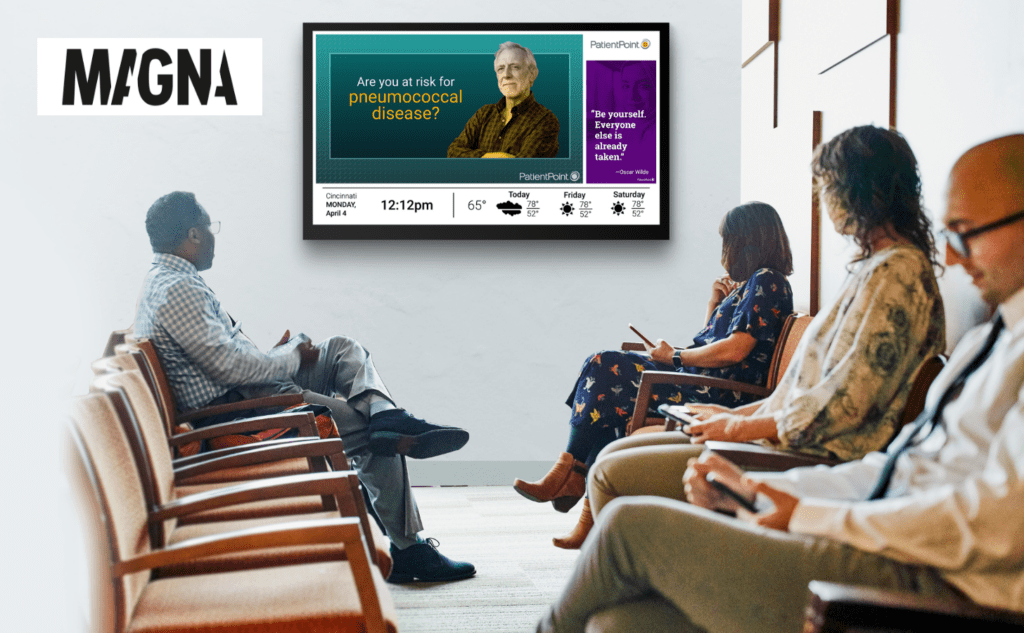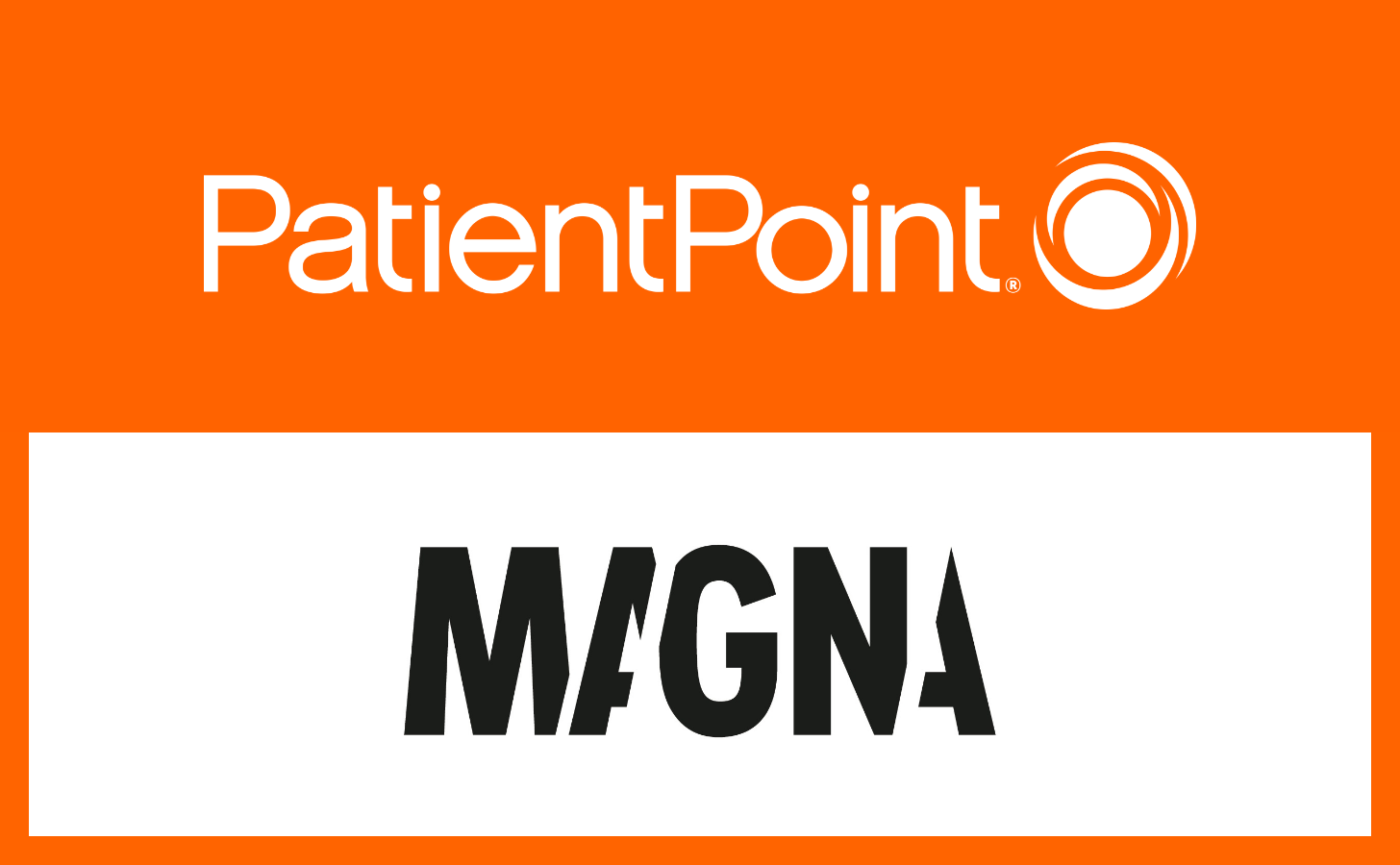NEW YORK & CINCINNATI – PatientPoint and MAGNA Media Trials released a research study, “Pharma Messaging Effectiveness: Cross-Channel Analysis,” today. The report explored the impact of prescription drug advertising across media channels and resources (e.g., online health portals, health and wellness blogs, social media, TV, radio, pharma websites, etc.). Pharma ads served in a healthcare provider’s (HCP) office outperformed all other channels as the most trusted source of health information, regardless of respondents’ age. The study found ads showed in an HCP office earned up to +16% higher level of trust compared to ads on websites and online health portals, which was the second most trusted communication channel.
“We continue to explore the benefits of matching the right audience with the right message across industries,” said Kara Manatt, EVP of Intelligence Solutions, MAGNA. “Consistently, the data shows that advanced strategies like this cross-channel approach tested for pharma ads, yield better outcomes than traditional demographic targeting alone.”
The study revealed pharma brands can benefit from a strategic messaging approach that aligns to audience channel preferences, e.g., pair ads in the HCP environment with social media ads to reach adult Gen Z (19%), while combining HCP ads with pharma company or brand website ads to connect with Millennials (16%), Gen X (13%), and Boomers (10%).
“We now have confirmation that Americans are most focused on healthcare in the spaces and places where they receive care, and the results of our research firmly cement the doctor’s office as the most influential place for brands to reach healthcare consumers along their treatment journey,” said PatientPoint Chief Client Officer Linda Ruschau. “This research also underscores how targeted marketing in the endemic, highly contextual physician’s office environment can most effectively reach the right patients with the right information at the right time.”

A focus on trustworthiness is one area of opportunity identified for pharma advertisers. The study demonstrated that pharma brands could be more effective with less frequent advertising and by emphasizing clear, transparent messaging designed for education and actionable purposes.
When it came to pharma ads appearing on social media, research participants noted, “I’ve seen these types of ads way too many times in this setting,” and those appearing while browsing online “use complex medical terms that are challenging to understand.”
On the flip side, the top reason for participants to trust ads shown on TV and video channels was “the information they convey is educational.” Transparency was the main driver of trust on the social media channel, with patients wanting brands to disclose the potential risks and any alternatives to the advertised treatment. These results point to the possibility of enhanced advertising outcomes based on the right mix of messaging and a cross-channel strategy. Tapping into the healthcare provider’s office places prescription medicine ads in the go-to source for trusted health information (55%), as well as the most suitable (84%) and relevant (61%) environment for patients.
Melissa Gordon-Ring, Global President, Health, at Initiative, commented: “Data that can empower pharma brands to deliver even better engagement strategies across their diverse audiences is incredibly valuable. Our clients, many of which are reputable, well-established brands, have a wealth of information they can provide, beyond just their product offerings. We are committed to partnering with them and exploring tools, platforms, and channels that help ensure their messages reach consumers and meet their needs.”
Read the full PatientPoint/Media Trials report here.
Methodology:
The “Pharma Messaging Effectiveness: Cross-Channel Analysis” study was conducted in the United States with 1,517 participants across a nationally representative sample of people (age, gender, geography). All participants surveyed were over the age of 18 and self-reported visiting a healthcare provider at least one time annually. They were randomly served ads in one of five channels – healthcare provider’s office, on social media, TV/video (streaming or cable/satellite), online search browsing, or pharma company’s online website (desktop or mobile). The channel environment was selected based on their typical exposure to pharma messaging.
###
About MAGNA
MAGNA is the leading global media investment and intelligence company, and part of the IPG Mediabrands network. Our trusted insights, proprietary trials offerings, industry-leading negotiation and unparalleled consultative solutions deliver an actionable marketplace advantage for our clients and subscribers. We are a team of experts driven by results, integrity, and inquisitiveness. We operate across five key competencies, supporting clients and cross-functional teams through partnership, education, accountability, connectivity, and enablement. For more information, please visit our website: https://magnaglobal.com/ and follow us on LinkedIn.

